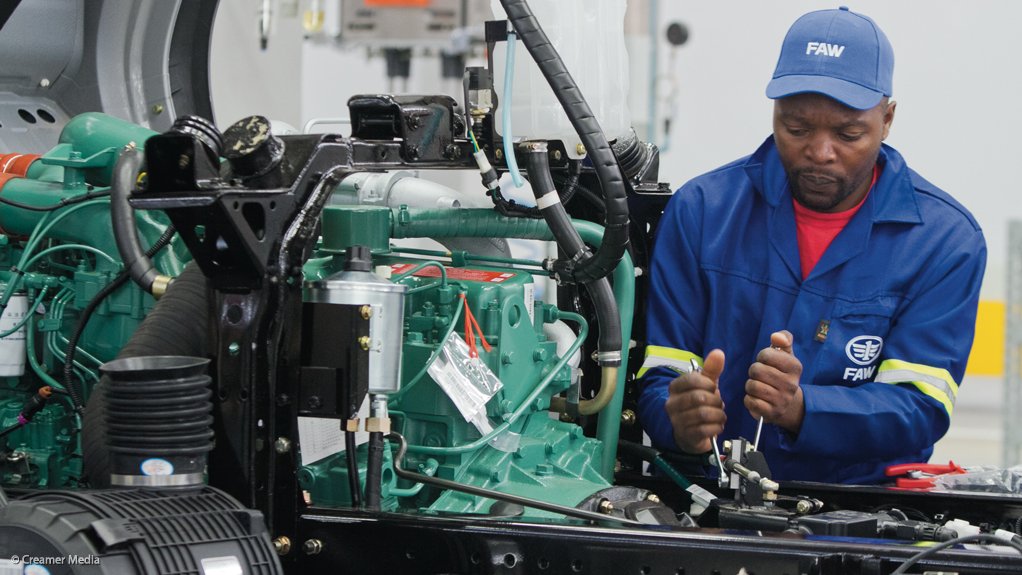Much like the July mining production figures, the 5.6% bounce back into positive year-on-year growth territory for manufacturing production in July must be seen in the context of last year’s trough in manufacturing activity, BNP Paribas economist Jeffrey Schultz has asserted.
“In fact, momentum growth in manufacturing production volumes remains negative, contracting 4.9% on a seasonally-adjusted annualised rate basis and continues to indicate suppressed global and domestic demand conditions,” he said in a statement.
This despite Statistics South Africa revealing on Thursday that the uptick in manufacturing output was largely owing to a 17.4% increase in output in the basic iron and steel, nonferrous metal products, metal products and machinery sectors, as well as a hefty 39.6% jump in the manufacturing of motor vehicles, parts and accessories and other transport equipment.
Seasonally adjusted manufacturing production, meanwhile, increased by 0.3% in July compared with June, following month-on-month changes of 0.8% in June and -0.7% in May.
This was driven mainly through a 1.1% rise in petroleum, chemicals, rubber and plastics, a 0.4% climb in basic iron and steel and nonferrous metals and a 3% improvement in motor vehicles, parts and accessories production.
The largest negative contributor came from food and beverages production, which slipped 1.7% in July.
Schultz cautioned that the outlook for domestic manufacturing remained “riddled” with challenges and was reflected in the recent slip back below 50 for key manufacturing sectors in the Purchasing Managers’ Index.
“This indicates that the sector looks unlikely to give a meaningful push to gross domestic product growth in the near future,” he commented.
Banking group Investec, meanwhile, earmarked government policy as a key reason for the weakness in activity levels in South Africa’s industrial sector, with rising input costs from labour, electricity, water, property rates and taxes also likely to weigh on the sector.
“Technical skills shortages, low labour productivity, infrastructure constraints and high levels of State control and intervention have [also] negatively impacted the industry,” it held.
The bank expected manufacturing to remain under pressure this year as the consumer continued to come under increasing pressure from the lagged effects of interest rate hikes.
EMAIL THIS ARTICLE SAVE THIS ARTICLE
To subscribe email subscriptions@creamermedia.co.za or click here
To advertise email advertising@creamermedia.co.za or click here











